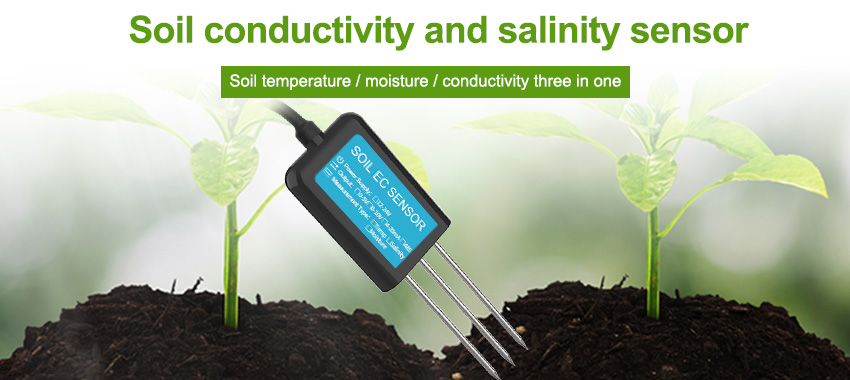Land inspection is a critical aspect of various industries, such as agriculture, construction, and environmental research. Understanding the soil conditions is essential for making informed decisions regarding land usage and management. Soil temperature and humidity sensors play a vital role in land inspection by providing accurate and real-time data on these two key parameters. This article explores the significance of soil temperature and humidity sensors in land inspection and their applications in different industries.

Importance of Soil Temperature and Humidity:
Soil temperature and humidity are fundamental factors that influence plant growth, microbial activity, and nutrient availability. By monitoring these parameters, land inspectors can assess the suitability of the soil for specific purposes. Let’s delve into the importance of soil temperature and humidity in land inspection:
Agriculture: In agriculture
soil temperature and humidity are crucial for determining the optimal conditions for crop growth. Different crops have varying temperature requirements, and monitoring soil temperature is essential for choosing appropriate planting times. Soil temperature sensors provide real-time data to farmers, enabling them to make informed decisions about irrigation and other cultivation practices.
Soil moisture
on the other hand, influences water management in agriculture. Soil humidity sensors help farmers detect the moisture content in the soil, allowing them to optimize irrigation scheduling and prevent overwatering or underwatering. This data-driven approach improves water efficiency, reduces costs, and promotes sustainable farming practices.
Construction:
Soil conditions significantly impact the stability and integrity of structures. Soil temperature and humidity sensors are used in construction projects to monitor the moisture content and temperature variations in the soil. This information helps engineers and construction professionals assess the suitability of the soil for supporting buildings, roads, and other infrastructure.
For instance
high soil moisture levels can lead to soil expansion, which could result in foundation instability or structural damage. By using soil humidity sensors, construction teams can identify areas with excessive moisture content and take appropriate measures, such as drainage systems, to mitigate potential risks.
Environmental Research
Soil temperature and humidity sensors are integral to environmental research and monitoring. They provide valuable insights into the impact of climate change, land degradation, and other environmental factors on soil health. By continuously monitoring soil temperature and humidity, researchers can assess the effects of these parameters on ecosystems, biodiversity, and soil carbon storage.
Applications of Soil Temperature and Humidity Sensors in Land Inspection:
Precision Agriculture: Precision agriculture utilizes soil temperature and humidity sensors to optimize farming practices. By collecting real-time data, farmers can precisely manage irrigation schedules, fertilizer application, and pest control measures. This targeted approach leads to improved crop yields, reduced resource wastage, and enhanced sustainability.
Land Rehabilitation and Restoration:
In land rehabilitation projects, soil temperature and humidity sensors help land inspectors assess the suitability of the soil for restoring vegetation cover. Monitoring these parameters allows them to identify areas that require additional water or those prone to erosion. By using soil sensors, land restoration efforts can be more effective and efficient, promoting ecological balance and preventing further degradation.
Urban Planning and Infrastructure Development:
Soil temperature and humidity sensors are essential in urban planning and infrastructure development. By analyzing soil conditions, engineers can determine the feasibility of constructing buildings, roads, or parks in specific locations. Accurate data from soil sensors aids in optimizing designs, ensuring stability, and mitigating potential risks associated with soil instability or inadequate moisture content.
Challenges and Considerations:
While soil temperature and humidity sensors offer valuable insights, several challenges must be considered:
Sensor Calibration and Placement:
To ensure accurate readings, soil sensors need to be properly calibrated and placed at appropriate depths. Calibration is necessary to account for variations in soil types and sensor performance. Correct placement ensures that the sensors capture representative data, giving a comprehensive understanding of soil conditions.
Sensor Reliability and Maintenance:
Soil sensors may face challenges such as sensor drift, degradation, or damage due to environmental factors. Regular maintenance and calibration are crucial to ensure the reliability and accuracy of the data collected. Additionally, robust sensor designs and protective measures can help extend the lifespan of the sensors.
Data Analysis and Interpretation:
Collecting vast amounts of data from soil sensors requires effective analysis and interpretation. Advanced data analytics techniques, including machine learning algorithms, can help in identifying patterns, trends, and anomalies in the data, enabling better decision-making in land inspection.

Conclusion:
Soil temperature and humidity sensors are invaluable tools for land inspection across various industries. Their ability to provide accurate, real-time data on soil conditions enables farmers, engineers, and researchers to make informed decisions regarding land usage, construction, and environmental management. By understanding the importance of soil temperature and humidity, and considering the challenges associated with sensor deployment, we can leverage these technologies to promote sustainable land practices and ensure optimal land use.